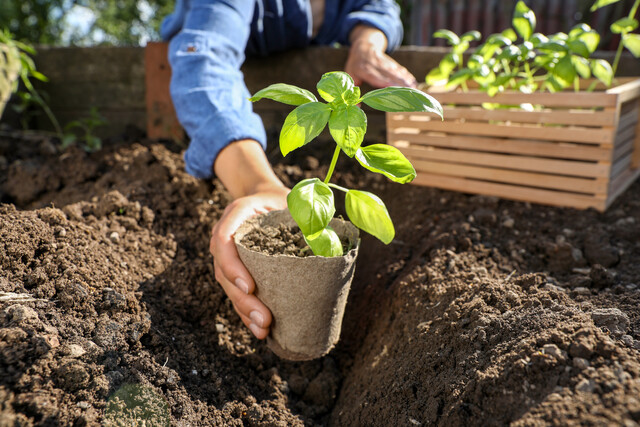Whole wheat breads have a reputation for difficulty especially when compared with their more processed white bread cousins. Whole wheat flour has very little gluten which can mean that the dough is rough, crumbly, and difficult to work with. When made with patience and diligence, a loaf of whole wheat bread can be a splendid thing. Whole wheat breads have rich, nutty flavors and are bold, healthy compliments to any sandwich or meal.
Objectives:
1. Learn what make whole wheat different from more refined flours.
2. Learn tips and trick for dealing with whole wheat flour.
3. Learn a few delicious whole wheat bread recipes.
Simple Whole Wheat Bread:
This simple, delicious recipe presents a great introduction to the world of whole wheat bread baking. The all-purpose flour blends well with the whole wheat flour and makes the dough much easier to work with. It is lighter than other whole wheat breads while still maintaining the characteristic whole wheat boldness and flavor.
Following recipe makes two 9in x 5in loaves�
Ingredients:
1 cup of warm water (110- 115�F)
2 teaspoons of active dry yeast
1 cup of while milk
� of a cup of honey
2 tablespoons of butter, melted
2 � cups of all-purpose flour (plus extra for kneading)
2 � cups of whole wheat flour (plus extra for kneading)
1 tablespoon of salt
Steps:
1. Sprinkle yeast over warm water (not hot!) in a large mixing bowl or the bowl of a standing electric mixer. Let stand until the yeast is dissolved (a few minutes).
2. Stir in milk, honey, and butter.
3. Stir in 2 cups of all-purpose flour, the salt and mix until well incorporated. Add the rest of the all-purpose and whole wheat flours and stir to form rough dough. Allow dough to sit for 20 minutes to give time for the flour to absorb the liquid.
4. Knead dough either by hand on a flat, floured surface or with dough hooks in an electric standing mixer. If the dough gets sticky (like bubblegum) add equal amounts of all-purpose flour and whole wheat flour (one tablespoon at a time) as you go along.
5. Place the kneaded dough ball into a lightly greased mixing bowl and turn over to coat the dough. Cover with a damp cloth and allow to rise in a warm place until it has nearly doubled in size (about 1 � hours). The dough may not double as dramatically as with white bread dough, but it should be visibly puffed up in size.
6. Sprinkle flour on a flat, dry surface and place risen dough on the flour. Turn the dough to coat evenly with flour. Divide dough into two equal parts and allow to rest for 10 to 15 minutes.
7. Shape each ball into bread loaves with taught surfaces and place each one in a lightly greased 9in x 5in bread pan.
8. Preheat the oven to 425�F.
9. Allow the loaves to rise again until the tops dome over the edges of the pans (about 30-40 minutes).
10. Cut a slice lengthwise down each loaf with a serrated knife.
11. Place loaves in the middle of the oven and immediately turn down the temperature to 375�F.
12. Bake for 30-35 minutes. The tops will be dark to golden brown when finished, and the loaves will sound hollow when tapped.
13. Allow to cool completely before slicing and serving.
Homemade Whole-Grain Bread
This recipe is slightly more complicated than the Simple Whole Wheat Bread recipe above, but it is a step up in both flavor and texture. This recipes utilizes sprouted whole grains to enhance the nutritional quality and content of the bread, making it a very healthy option especially for people limiting carbs and sugars.
Following recipe makes one loaf�
Ingredients for the Sponge:
1 � cups of whole-wheat flour
� teaspoon active dry yeast
� cup of cool water
Ingredients for the Soaker:
1 cup (8 oz) of whole wheat flour, OR � cup (2 oz) whole wheat flour PLUS � cup (6 oz) of total cooked grains and uncooked grains
� teaspoon of kosher or sea salt
� to 2/3 cup of buttermilk (wet grains require less liquid than dry grains)
2 tablespoons of orange juice
Ingredients for the Final Dough:
All of the Sponge recipe
All of the Soaker recipe
1 teaspoon of salt
2 � teaspoons of active dry yeast
1 tablespoon of unsalted butter, softened
2 tablespoons of raw honey
Extra water and flour for adjustments
Steps:
The Day Before Baking:
1. Make the Sponge: Mix all sponge ingredients together to form a ball of dough. Knead with wet hands or in an electric standing mixer with dough hooks. Only knead for about 2 minutes, then allow to rest for 10 minutes. Knead again for another 1 -2 minutes. Cover and refrigerate immediately for at least 6 hours. The sponge can be made a few days ahead of time and stored for use on the baking day.
2. Make the Soaker: Mix all of the soaker ingredients together to form a loose, wet ball. Cover and leave at room temperature for 6 to 24 hours.
On Baking Day:
1. Remove the sponge from the refrigerator and allow to acclimate to room temperature before using (about 1 hour).
2. Cut and tear the sponge into about a dozen pieces and coat with soaker before returning them all to the large mixing bowl.
3. Add all remaining ingredients except butter and honey. Mix with hands or dough hooks for 5-6 minutes with increasing speed.
4. Add honey and butter and continue mixing for another 2-3 minutes.
5. Allow the dough to rest for 10 minutes.
6. On a floured work surface, knead the dough for 8-10 minutes adding water and/or flour as necessary.
7. Form the dough into a ball and place in in a lightly greased mixing bowl. Turn to coat the entire ball. Cover loosely with a damp cloth and allow to rise until the dough is 1 � times its original size (about 45 minutes). It should NOT be doubled in size. Over-risen dough can case become weak and make for misshapen loaves.
8. Return dough to work surface and form into a loaf. Place in a lightly greased bread pan (9in x 5in). Cover and allow to rise again for another 45 minutes. Again, it should be about 1 � times its original size when done rising for the second time.
9. While the loaf is rising, preheat the oven to 450�F.
10. For best results, use a baking stone on the top rack and a cast iron pan on the top rack. This with help to maintain an even heat.
11. Lightly mist the top of the loaf with water. Cut a long slit lengthwise on the top of the loaf with a serrated knife.
12. Place the loaf pan on the stone in the center of the oven. Immediately add about � a cup of warm water to the cast iron pan above. Cover your hand and arm with a kitchen towel to prevent a steam burn.
13. Lower the temperature to 375�F and bake for 20 minutes. Rotate the pan and bake another 15-20 minutes.
14. Allow to cool completely before slicing and serving
Optional:
Spritz the crust with water once or twice while baking to prevent over browning
Prop the oven door open for the last 5 minutes of baking for a crispier crust.
Conclusion:
Whole wheat flour has a reputation for being more difficult to work with than white flour, and this very well may be true. The result, however, is a hearty bread rich in flavor and steeped in tradition.
The Art of Sourdough
If bread baking can be called a form of art, then sourdough is the epitome of its creative expression. Sourdough is an American favorite, brought (according to legend) by Christopher Columbus himself. With roots in in ancient Egypt, sourdough is very popular with Europeans who carried the tradition with them to the "New World." The key aspect of sourdough is the sourdough starter which is made from fermented yeasts and lactobacilli that are sometimes so old that families actually pass down sourdough starter for generations. A famous San Francisco bakery has cultivated and used the same starter for over 150 years. If you do not happen to have a 200-year-old sourdough starter to work with, have no fear. You can still make a delicious loaf of sourdough by making a new starter completely from scratch. This process can be as enjoyable as the outcome is delicious.
Objectives:
1. Learn about what makes sourdough unique in the world of breads.
2. Learn how to make your own sourdough starter from scratch.
3. Learn a few delicious sourdough bread recipes sure to win over any crowd.
The Uniqueness of Sourdough:
Sourdough has a slightly sour taste due to the lactic acid that is borne of the fermentation process. It is biologically leavened and is a popular addition to 100% rye breads which respond much better to sourdough than dry yeasts as leavening agents.
Most people buy their sourdough starter from a bakery, grocery store, or even online, but it can be a fun process to watch as the wild yeast grow in your own kitchen.
Sourdough Starter:
Making sourdough starter is not a quick process, as it usually takes about 5 days. Each day you will "feed" the starter with equal parts water and flour. Given time, the mixture of flour and water with begin to cultivate or "trap" wild yeast. As the wild yeast grows stronger it begin to bubble, becoming frothy and sour-smelling. It can take longer than 5 days, depending upon the conditions of your kitchen, but as long as you keep feeding it and you see signs of yeast activity, then it should be fine. If there are no signs of yeast activity after three days, see the troubleshooting section below.
Following recipe makes 4 cups�
Filtered water
Troubleshooting Guide for Sourdough Starter:
Problem: No signs of bubbles or yeast activity after several days.
Solution: Add a pinch of commercial yeast next time you feed your starter. This should help kickstart yeast growth. Remember it is also important that you store the starter properly and stir it vigorously every time that you feed it.
Problem: STILL no signs of activity.
Solution: This means that something is wrong. Discard your starter and begin anew with a clean container and make sure to used filtered water if at all possible. Make sure it is not too hot or too cool in your kitchen.
Problem: A thin layer of water collects on top of the starter.
Solution: This is nothing to worry about. It just means that your flour to water ratio may be just a bit off with more water than flour, or maybe that it has been too long between readings. Just pour off the excess water and feed your starter as usual. Weigh your ingredients if at all possible.
Problem: The top of the starter is moldy or tinged red.
Solution: Disregard the old starter and begin anew.
Traditional San Francisco Sourdough:
Sourdough bread in the United States is often associated with the California and Alaska gold rushes of the 1800s. Sourdough was a staple of gold miners, many of whom were said to have carried a jar of sourdough starter with them out into the wilderness. The first company in the United States to begin selling both sourdough bread and sourdough starter was based out of San Francisco and is still a tourist destination to this day. This recipe is based off of their famous sourdough bread and is simple and delicious.
Following recipe makes one large loaf�
Ingredients:
4 3/4 cups of bread flour3 tablespoons of granulated white sugar

























